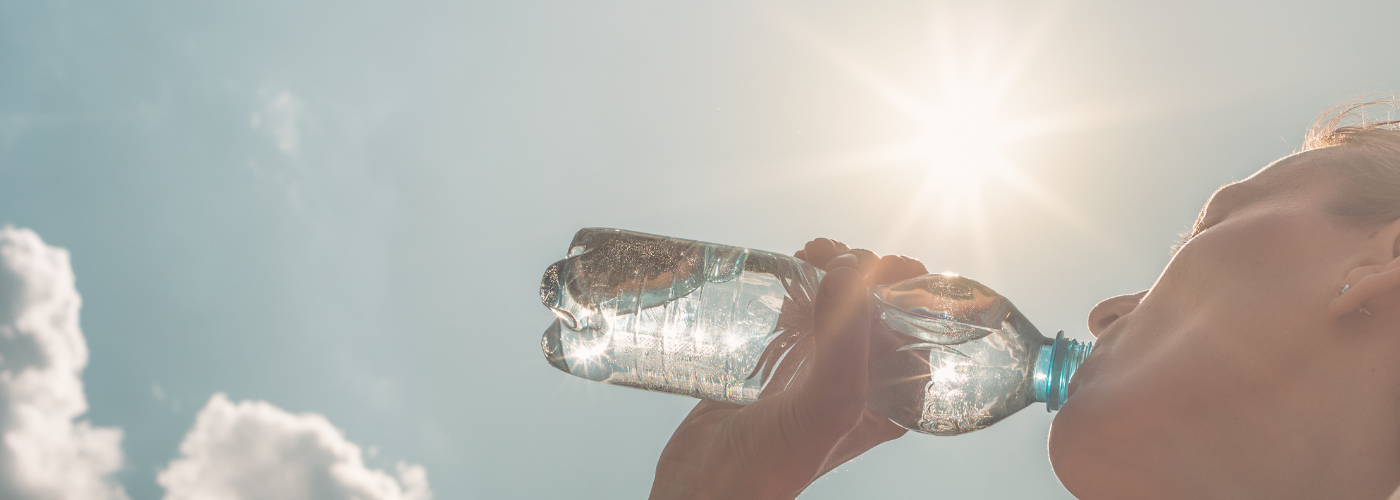How to Hydrate Quickly and Safely—Beyond Just Drinking Water
Authors:

Ashley Palmer
Nutritional Therapy Practitioner, Health & Wellness Expert
Key Takeaways:
Feeling parched isn’t just uncomfortable—it’s your body signaling that vital systems are under strain. Hydration isn’t just about downing more water. It requires restoring both fluids and dissolved minerals (electrolytes) at the right pace, so your body can absorb them efficiently. Whether you’ve just finished a vigorous workout, you’re fighting off a seasonal cold, or just battling the midday slump, knowing how to rehydrate quickly—and safely—will help you maintain energy, focus, and overall well‑being.
Table of Contents:
-
Signs of Dehydration and When to Act Quickly
-
The Role of Electrolytes in Rapid Rehydration
-
Best Methods for Rapid Hydration
-
Hydration Strategies for Different Situations
-
When Dehydration Becomes an Emergency
-
Myths About Hydration: What Works and What Doesn’t
-
How to Maintain Optimal Hydration Daily
-
Putting Easy and Safe Hydration into Practice
Signs of Dehydration and When to Act Quickly
Daily fluid losses, through sweat, breathing, and everyday activities—even talking—can quickly lead to dehydration. Every breath, every step, every bead of sweat quietly chips away at your body’s fluid reserves. If fluid losses exceed fluid intake, blood volume decreases, and circulation slows. You might first notice dry mouth, fatigue, or mild headaches—signs that you’re already about 1% dehydrated. Further fluid deficits (1–2% of your body weight) can compromise strength, endurance, and even cognitive function. It doesn’t take much before dehydration becomes a serious health concern.
Environmental conditions play a pivotal role: high heat and humidity accelerate sweat rates (sometimes over a liter per hour), while altitude increases respiratory water loss. Beyond fluid loss, dehydration stresses your cardiovascular system and upsets electrolyte balance. With lower blood volume, your heart works harder, raising your resting rate and contributing to breathlessness. At the same time, shifts in sodium, potassium, and magnesium levels can hamper nerve signals and muscle contractions, slowing dehydration recovery.
Beyond Thirst: Your body’s warning lights go on before mouth dryness—monitor urine color as an early signal. A pale-straw hue indicates good hydration; deeper yellow or amber shades mean it’s time to replenish fluids and electrolytes.
The Role of Electrolytes in Rapid Rehydration
Efficient water absorption depends on the presence of dissolved minerals (electrolytes) that establish osmotic gradients (differences in salt and mineral levels that draw water into your cells) in the gut, pulling fluids into circulation throughout the body.
Sodium draws water into the bloodstream, potassium supports intracellular hydration, magnesium facilitates nutrient transport, and chloride balances electrical charges across cell membranes. (It’s really a team effort!) These charged ions work together to direct fluids where the body needs them most (especially helping boost muscle recovery after exercise) and to keep cellular processes running smoothly.
|
Electrolyte |
Role |
Sources |
|
Sodium |
Retains fluid, supports nerve impulses |
Bone broth (chicken, beef, or vegetable), pickles, salted nuts |
|
Potassium |
Regulates muscle contractions |
Bananas, potatoes, spinach |
|
Magnesium |
Facilitates energy production and muscle relaxation |
Almonds, seeds, whole grains |
|
Chloride |
Works with sodium to maintain balance |
Sea salt, celery, seaweed |
Replenishing these electrolytes in balance with each other helps fluids circulate effectively and keeps cellular processes running smoothly—both too little or too much can be problematic.
Drink Your Electrolytes: Drinking coconut water might be a tasty way to replenish your fluids, but is it a good source of electrolytes? (Read the blog linked above to find out.)
Best Methods for Rapid Hydration
Effective and fast rehydration relies on a combined strategy: creating a simple oral rehydration solution (ORS), incorporating water‑rich whole foods that deliver natural minerals, selecting beverages formulated to match plasma electrolyte ratios, and timing fluid intake to align with your activity levels, ensuring balanced restoration of both fluids and electrolytes.
1. Formulate an Oral Rehydration Solution (ORS)
A time-tested recipe (½ teaspoon salt + 6 teaspoons sugar per liter) promotes sodium-glucose co-transport in the gut, optimizing water uptake. Use after moderate fluid loss (illness or significant exercise).
2. Leverage Whole Foods
Water-rich fruits and vegetables (watermelon, cucumber, oranges) contribute hydration alongside vitamins and antioxidants. Pair with mineral-dense snacks—yogurt, nuts, or seeded bars—to deliver electrolytes naturally.
3. Choose Electrolyte Beverages Wisely
Select drinks providing approximately 300–600 mg sodium and 75–225 mg potassium per liter, with minimal added sugar (≤6 g/100 mL). This concentration echoes plasma levels, promoting rapid absorption without gastrointestinal discomfort.
4. Synchronize Intake with Activity
Begin with approximately 0.08–0.16 fl oz per pound of body weight (5–10 mL/kg) two hours before exertion. During sustained activity, take small sips (5–7 fl oz every 15–20 minutes) and align replacement with sweat rates to prevent both dehydration and overhydration.
Hydration Strategies for Different Situations
Rehydrating After Exercise or Heat Exposure
Exercise and outdoor labor can lead to rapid fluid losses, often exceeding a liter per hour in hot or humid conditions. Outdoor workers and athletes should pre-hydrate with approximately 0.08–0.16 fl oz per pound of body weight two hours before activity, then sip 5–7 fl oz every 15–20 minutes. Consider adding 300–600 mg of sodium per liter in your beverage to replace sweat losses and support muscle recovery. Older adults and young children, who sweat less efficiently, may require slightly lower volumes but higher electrolyte concentrations to prevent cramps and heat-related strain.
Rapid Hydration During Illness or Fever
Fever, vomiting, and diarrhea accelerate dehydration, especially in young children and the elderly, whose fluid reserves are smaller. A basic ORS (½ tsp salt + 6 tsp sugar per liter) can prevent dangerous deficits; serve in small, frequent doses (5–7 fl oz every 10–15 minutes). Broths and herbal teas offer soothing warmth and added minerals. Monitor for signs of severe dehydration—dry mouth, sunken eyes, or lethargy—and seek medical care if oral intake isn’t enough.
Hydrating After Alcohol Consumption
Alcohol acts as a diuretic, increasing urine output and fluid loss. After drinking, restore balance by alternating glasses of water or ORS with your beverage, and follow up with a mineral-rich snack, such as nuts, yogurt, or a smoothie containing banana and spinach, to replace potassium and magnesium. For the morning after, continue sipping water and consider a low-sugar electrolyte drink to stabilize levels.
When Dehydration Becomes an Emergency
If you or someone nearby shows signs of severe dehydration—confusion, rapid heartbeat, faintness, or virtually no urine output—immediately switch from DIY rehydration to rapid first aid:
-
Move to a cool, shaded area and elevate the person’s legs.
-
Offer small sips of an ORS or dilute sports drink every few minutes.
-
Apply cool compresses to the skin and loosen tight clothing.
-
Call for medical assistance or get to an emergency department without delay, since intravenous (IV) fluids may be required.
Myths About Hydration: What Works and What Doesn’t
Myth 1: 8×8 Hydration Is the Gold Standard
The traditional “8×8” guideline (stating that everyone should drink eight 8‑ounce glasses of water per day) offers a straightforward hydration goal, but fails to account for personal factors and alternative fluid sources. Research actually demonstrates that daily fluid requirements vary based on body size, activity level, environment, and unique health requirements, and proves that up to 30% of intake routinely comes from foods and other beverages (tea, coffee, milk, broths).
Rather than adhering to an arbitrary volume, align your intake with objective markers—thirst perception, urine pale‑straw color, and performance indicators (thirst, exercise endurance, and mental clarity)—and adjust both fluids and electrolytes to maintain a consistent hydration level.
Myth 2: Caffeinated Drinks Always Dehydrate
While caffeine has mild diuretic effects, typical consumption in coffee, tea, or soda does not cause net fluid loss. These beverages still contribute to overall hydration, especially when consumed in moderation, and can be counted toward your daily fluid goals. So don’t worry, your morning coffee is safe! (Maybe add a glass of water alongside it.)
Myth 3: Chugging Water Is Best for Hydration
Downing large volumes at once can overwhelm your gut and dilute electrolytes, leading to discomfort or hyponatremia (low blood sodium levels). Instead, spread intake throughout the day and align sips with activity levels to ensure efficient absorption.
How to Maintain Optimal Hydration Daily
Turn quick hydration into consistent habits with simple routines, flavor infusions, convenient electrolyte packs, and data-driven tracking for ongoing fluid balance.
-
Routine Check-Ins: Incorporate brief pauses—mid-morning, post-lunch, mid-afternoon—to assess. Are you thirsty? How’s your urine color? How’s your mental clarity? Make changes accordingly.
-
Flavor Enhancers: Infuse water with slices of citrus, berries, or herbs to encourage consistent sipping.
-
Portable Solutions: Pre-mix ORS packets or opt for single-serve, low-sugar electrolyte sachets for convenience on the go.
-
Data-Driven Habits: Use simple apps or hydration trackers to track intake and identify patterns over time.
Putting Easy and Safe Hydration into Practice
Monitor your hydration by tuning in to your body’s early signals—thirst cues, urine color, and performance feedback—and respond before deficits deepen. Start your rehydration process with a tailored oral rehydration solution (ORS) recipe, and complement your ORS with water‑rich whole foods and beverages balanced to meet your electrolyte needs. Plan your fluid intake around activities: pre‑load before exercise, take steady sips during exertion, and focus on replenishing afterward to restore both water and minerals. Adapt these strategies to your lifestyle and make hydration a consistent daily habit.

